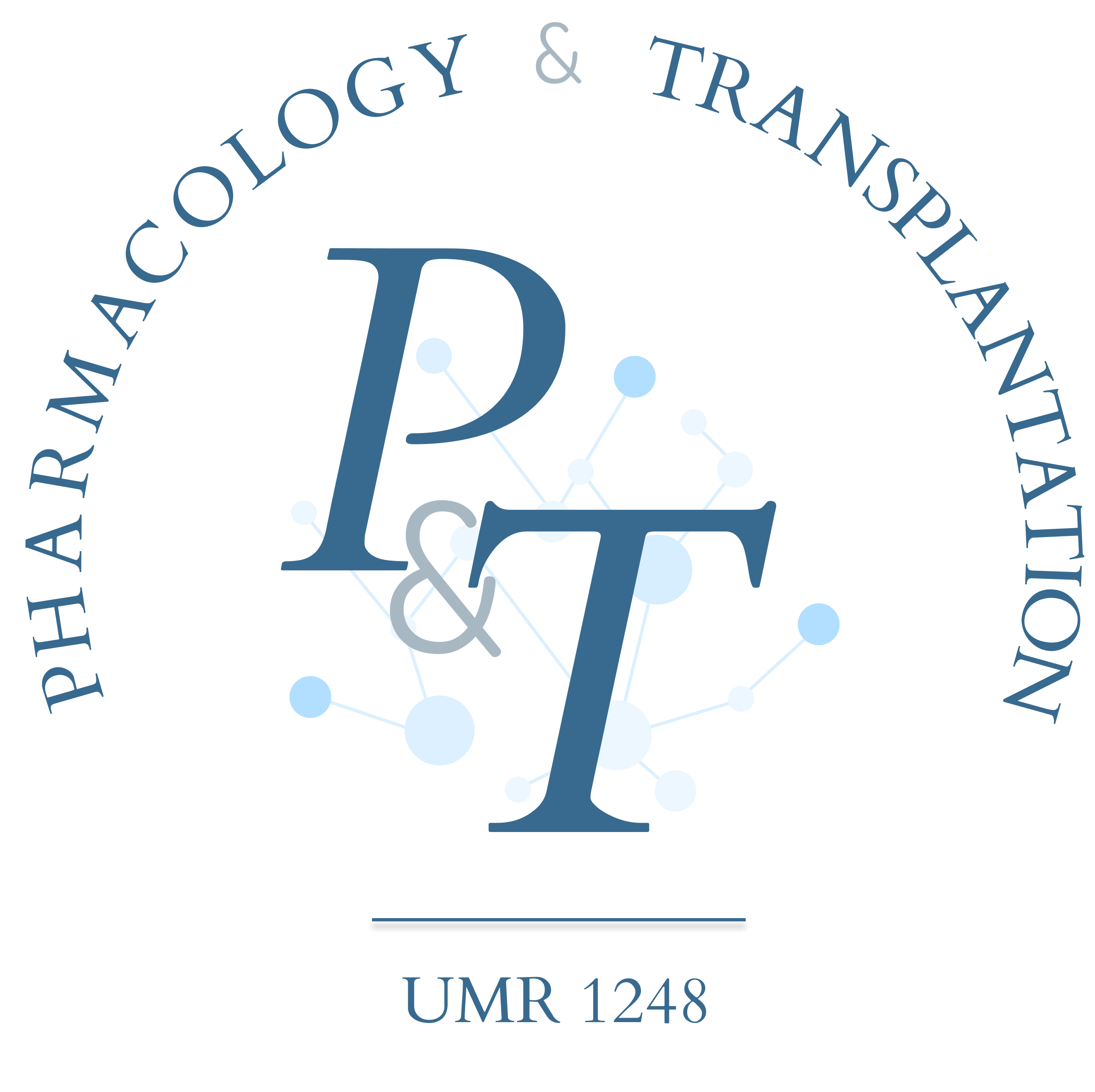Unravelling the features of albumin binding in chronic liver diseases by means of molecular dynamics simulations
Contact - Information
Florent DI MEO
Souleiman El Balkhi
UMR-1248 INSERM
CBRS – Université de Limoges
1, rue du Pr Bernard Descottes
87000 Limoges
Deadline: 30/04/2019
Documents:
- Resume
- Cover Letter
- Contact for recommandation letter(s)
Funding Source:
Pending for project/applicant acceptation by Univ. Limoges PhD School
Sci. Rep., 2016, 6, 35987
Hepatol. Baltim. Md, 2017, 65, 631–646
Hepatology, 2014, 60, 1851–1860
Hepatol. Baltim. Md, 2009, 50, 555–564
PhD Project - Computational Chemistry
Both the quality and quantity of human serum albumin (HSA) can reflect liver dysfunction owing to: (i) the exclusive synthesis of HSA in the liver, (ii) the multiplicity of HSA ligands and binding sites, (iii) HSA abundance (60% of all proteins) in plasma and (iv) the HSA role as the primary scavenger of both endogenous compounds and xenobiotics. HSA undergoes several post-translational modifications, in the liver or in blood, that may affect ligand binding. The clinical relevance of some of these modifications has recently been investigated in advanced liver diseases.
The complete understanding of the influence of HSA structural modifications upon ligand binding requires an atomic-resolved picture. Constructing molecular models subjected to molecular dynamics (MD) simulations is an approach of choice to describe ligand-HSA molecular interactions and the subsequent modifications which are highly dynamics in nature.
Robust in silico models will be constructed, considering several HAS isoforms (e.g., N-terminal truncated HSA, oxidized HSA…) as well as homodimer isoforms. The numerous crystallographic and NMR structures available in the protein databank will facilitate the construction of robust 3D models of human HSA. The conformational dynamics of the proteins, as well as the differences between isoforms, will be described after free (unbiased) MD simulations at the microsecond timescale. The MD simulations will be achieved on a series of replica to enable sufficient conformational sampling.
Once the different HSA models will be structurally validated against structural data issued from the literature, they will be used to assess the binding of a series of ligands of interest including metals, endogenous toxins (e.g., bilirubin), fatty acids, thyroid hormones (e.g., thyroxines), or immunosuppressive drugs (e.g., tacrolimus). Binding sites of various ligands in HSA have been already documented in the literature, which will guide our in silico systematic and comprehensive exploration of the binding sites and binding modes for various classes of ligands. The binding to the different HSA isoforms and homodimers will be studied. All possible protein-ligand geometries found using docking procedures will be employed as starting points for further free MD simulations. This post-docking MD procedure will be performed to sample local rearrangements of the ligand and the binding region and to elucidate the drug/toxin-dependent conformational modifications of HSA, for the different isoforms.
Finally, biased MD simulations (e.g., steered MD, adaptively steered MD or umbrella-sampling simulations) as well as MM-PB(GB)SA calculations will be performed to assess the binding free energy of ligands to the different HSA isoforms and homodimers. This will allow a semi-quantitative ranking of ligands (endogenous compounds and drugs) in terms of their affinity to the different HSA isoforms and homodimers. The molecular understanding and predictions will be correlated to the results of in-house in vivo experiments, as well as to clinical data obtained from patients with liver diseases of varying severity.
Although cirrhosis is the 14th cause of death in adults worldwide and the fourth in central Europe, its diagnosis is still challenging. Most chronic liver diseases are notoriously asymptomatic, until cirrhosis with clinical decompensation occurs9,10. Prevention of cirrhosis and the use of early diagnosis strategies, before and once it develops, are vital for maintaining patients in a symptom-free state and for delaying decompensation. This is particularly critical in liver transplant patients.
In early cirrhosis, conventional imaging and direct serum markers, often combined in scores, can lead to false-negative diagnosis10. Despite their lack of sensitivity and specificity, these tests are routinely used to explore the integrity of hepatocytes (aspartate transaminase and alanine transaminase), as well as the biliary (alkaline phosphatase and g-glutamyltransferase) and synthesis (prothrombin time and albumin) functions.
HSA modifications altering its structure and conformation can occur at early stages of cellular hepatic injuries. These modifications hinder HSA binding sites and properties. They can be revealed by the direct determination of the different HSA isoforms and by the measurement of modifications of the binding capacity of different ligands spiked in patient serum; some ligands can be directly measured using a single analytical method.
The objective is to structurally evaluate the impact of HSA modifications on the binding of various ligands including metals, endogenous toxins (e.g., bilirubin), fatty acids, thyroid hormones (e.g., thyroxine), or immunosuppressive drugs (e.g., tacrolimus). We aim at rationalizing the exact structural impact of HSA modifications, and how the scavenging of toxins is affected, which may increase pre-existent liver disease. Further HSA modifications will also be discussed within a molecular perspective.









